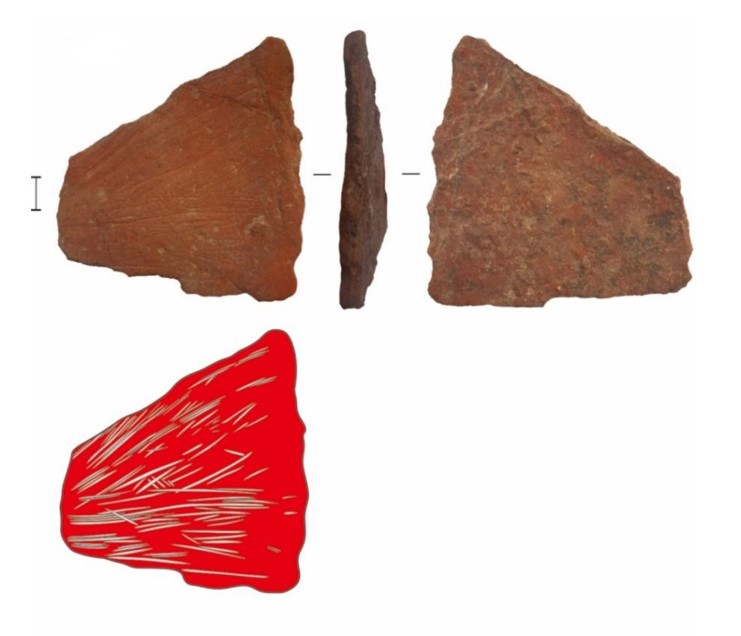Incised stone artefact in the context of Middle Holocene burials at Cappalombo 1, South Sulawesi, Indonesia | Artefak batu bergores dalam konteks penguburan Holosen Tengah di Situs Cappalombo 1, Sulawesi Selatan, Indonesia
DOI:
https://doi.org/10.26721/spafajournal.2021.v5.684Keywords:
Engraved artefacts, symbolic behaviour, hematite, pigment powder, burial, South Sulawesi, Artefak berukir, perilaku simbolik, hematit, bubuk pewarna, penguburan, Sulawesi SelatanAbstract
Since the recent discovery of Late Pleistocene rock art in Island Southeast Asia was announced, evidence for symbolic behaviour in the region has become a focus of international archaeological interest. South Sulawesi is one region that hold much evidence for this important human activity. In addition to the cave paintings, several engraved stone artefacts have also been recovered in the same area, nearly all of which date back to the Late Pleistocene. However, while cave use by ‘hunter-gatherer’ societies continued into the Holocene period, archaeological evidence for symbolic expression during this Toalean period is extremely rare. Here, we report for the first time on engraved stone artefacts from the Middle Holocene period, associated with six human burials. Of ten incised artefacts recovered, eight are stone flakes and two are stone plaquettes, all made of hematite material. Our study suggests that unlike comparative Pleistocene engraved stones, the incisions on the Cappalombo artefacts are more likely the result of use-wear that occurs from producing red pigment powder than portable artworks. As no Toalean-age cave art has yet been identified, it is suspected that pigment powder was applied to the corpses as part of a burial practice or perhaps smeared on the body of the person/s performing the ceremony itself as part of a symbolic ritualistic activity.
Sejak penemuan gambar cadas Pleistosen Akhir terbaru diumumkan di Pulau Asia Tenggara, bukti perilaku simbolis di wilayah tersebut telah menjadi fokus kajian arkeologis internasional. Sulawesi Selatan adalah salah satu wilayah yang menyimpan banyak bukti aktivitas manusia yang penting ini. Selain lukisan gua, beberapa artefak batu berukir juga telah ditemukan di daerah yang sama, hampir semuanya berasal dari Pleistosen Akhir. Namun, ketika penggunaan gua oleh masyarakat 'pemburu-pengumpul' berlanjut hingga periode Holosen, bukti arkeologis untuk ekspresi simbolis selama periode Toalean ini sangat langka. Di sini, kami melaporkan untuk pertama kalinya tentang artefak batu berukir dari periode Holosen Tengah, yang terkait dengan enam penguburan manusia. Dari sepuluh artefak gores yang ditemukan, delapan berupa serpihan batu dan dua berupa plakat batu, semuanya terbuat dari bahan hematit. Studi kami menunjukkan bahwa tidak seperti batu terukir Pleistosen, sayatan pada artefak Cappalombo lebih mungkin hasil dari penggunaan yang terjadi dari memproduksi bubuk pigmen merah daripada karya seni portabel. Karena seni gua periode Toalean belum dapat diidentifikasi, diduga bubuk pigmen dioleskan pada mayat sebagai bagian dari praktik penguburan atau mungkin dioleskan pada tubuh orang yang melakukan upacara itu sendiri sebagai bagian dari aktifitas ritual simbolis.

Downloads
Published
How to Cite
Issue
Section
License
Copyright (c) 2021 SEAMEO SPAFA and Author

This work is licensed under a Creative Commons Attribution-NonCommercial-NoDerivatives 4.0 International License.



